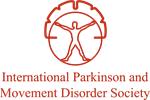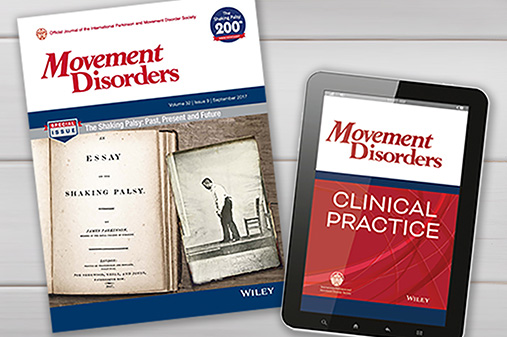Breaking down functional movement disorders • 2025 MDS Congress
Ms. Nicole Duff: [00:00:00] Good afternoon everyone, and welcome to a special episode of the MDS Podcast, coming from the Movement Disorder Congress 2025. We are so privileged to have Professor Aybek with us to discuss today's topic, functional Movement Disorders. Professor Aybek is a neurologist working at the University of Fribourg.
View complete transcript
To say Professor Abyek is a specialist in FMD as an understatement. We are very thankful to have you here today with us. I just listened to your talk on functional movement disorders, diagnosis, and management. Before we dive into the content of functional movement disorders, can you maybe tell us a little bit about what got you interested in this topic?
Prof. Selma Aybek: Sure. Thank you so much first for inviting me to take part of this podcast. It's a pleasure. And to talk about FMD, my passion. [00:01:00] So about how I got into FMD, it was actually the fascination for these clinical presentation that I saw during my training. I had a mentor who was a movement disorder specialist, and he showed me these unusual cases because back then, the diagnosis was still made a little bit by exclusion.
But he started showing me that there are actually positive signs. And I got so fascinated because we did not understand the pathophysiology. Mainly that was my interest. Why do these patients do these symptoms? And I wanted to know more.
Ms. Nicole Duff: And I think that over the years you've been such an amazing contributor to telling all of us about how that happens. And so thank you for the amazing work you've done.
So for our listeners, maybe you could just set the scene for us a little bit and just give a brief explanation of what is FMD.
Prof. Selma Aybek: Yes, so FMD, Functional Movement Disorder is actually a group of symptoms where people present with abnormal [00:02:00] movements or abnormal motor patterns, such as weakness. And it's actually a subgroup of what we call FND, functional neurological disorder. Because the same disorder can also express in different ways and be seen by other neurologists, like a non-epileptic or functional seizures, for example.
Or speech disorder would be part of FND, but sometimes diagnosed by other specialists. Or sensory problems, vision, hearing, so all the senses. Now, more recently, we also defined two groups that belong to that, that are functional cognitive disorder and functional vertigo. That has also this name of triple PD, PPPD, for postural persistent perceptual dizziness.
So this is a whole group. But we are focusing today on FMD, right movement and motor problems.
Ms. Nicole Duff: Brilliant. Thank you. That gives us a great overview of where everything sits. [00:03:00] So how common would you say FMD is?
Prof. Selma Aybek: FND again, in general has been shown to be one of the commonest cause to see a neurologist in different studies. So it's very common. It's been estimated also to represent up to a third of consultation in a general neurologist setting. Now that said, it can also be just FND or FND+ neurological disorder because it's not rare to see patients who can have both, right? Coexisting. And FMD is the commonest subtype.
Ms. Nicole Duff: So you mentioned that it can also be seen with a neurological condition. Are there specific neurological conditions that it's often seen with or can it be seen with any neurological condition?
Prof. Selma Aybek: So it can be seen with any. So you can have any neurological condition with a functional symptom. [00:04:00] But there are some specific patterns that we now recognize, and one that is of particular interest, I think, that we discussed in this session is the association of functional parkinsonism with actual Parkinson's disease.
And it's very interesting because first, the clinical presentation is not that easy. We need to really carefully look for signs. One of the signs we discussed in the video is that the slowness of movement that you can see in functional parkinsonism will be different in the sense that patient will be slow when you do the finger tapping, but they won't show this loss of amplitude. That is typical of the bradykinesia that we see in Parkinson. So these help you make the diagnosis of functional parkinsonism.
And it's been shown now in a few case series that patients can have both. But when they have both, it tends to be that they start with the functional parkinsonism, sometimes years before we actually find or develop the signs [00:05:00] and symptoms of Parkinson's.
So there has been suggestion that it could represent a prodrome, maybe, of Parkinson and that we should be extra careful when we see these patients with functional parkinsonisms to follow them. And they might not, but they might develop the disease. This is an example where the role of the neurologist is really very important.
Ms. Nicole Duff: So over the last few years, there's so much research that has been coming out around FMD. How do you feel that the medical community has responded to this research? Do you feel there are still some controversies around it?
Prof. Selma Aybek: Yeah. So thank you indeed for raising this point because we see a big lag between what's shown in science and the literature and then the clinical application. And here I'm referring to this whole evidence from the literature that now we can make the diagnosis with positive signs that there are a lot of positive signs that have been validated in [00:06:00] studies showing a good specificity, showing a good inter rate reliability. And yet, in clinical practice, it takes years before neurologists actually know these signs or use them. And yeah, but it's, I guess it's normal in the field, right? But it takes years until clinical research comes into clinical practice.
And we need then to bridge that gap. A lot of conferences teaching, post-graduate teaching, pre-graduate teaching — I think if we teach the young medical doctors early how to make the diagnosis, we won't have this issue anymore.
Ms. Nicole Duff: So to everyone listening, if you understand the ins and outs of diagnosis, go out and share with your colleagues. So when making the diagnosis, do you ever discuss the prognosis with the patient?
Prof. Selma Aybek: Not necessarily, I really wait for the patient to ask. And we often have patients who ask. And then my answer is that for an individual person, we cannot [00:07:00] predict we're not good at it. But then I cite studies and I say that roughly 40% of patients will still have symptoms. But it really depends.
And I then tailor my explanation to what I see. Because if I see a patient with acute symptoms, I tend to be more encouraging and positive because from experience, not really from literature, but from experience, we know that they tend to get better quicker. When we see patients with very chronic symptoms, I also want them to have realistic expectations, so I tell them that it will take months or years. And again, it's not to discourage them, it's that to make a good treatment plan with them that is realistic.
Ms. Nicole Duff: Thank you. And again, when explaining the diagnosis to your patients, are there any big no-nos that you would say, stay away from, everyone, please.
Prof. Selma Aybek: Yes, I think that two words that we should stay away [00:08:00] from is to refer to functional disorder on one hand, and oppose it to a real disorder. So the term real should not be used. Or Guillain is the other one, to say this is a Guillain tremor, whereas this is a functional tremor.
This is really not helpful because it conveys, really, a sort of hierarchy of symptoms and that FMD would be less important. And we're talking to people who suffer on a daily basis with the symptoms. And other than that, I think we can use any term. Of course, functional is the most appropriate to me because it's very descriptive.
But what matters more is our attitude and our behavior and the respect we show to our patient. And we show them that we not only believe them, but we have seen many other patients like them. And it's not rare, and we know what we're talking about. And this reassures the patients a lot.
Ms. Nicole Duff: Brilliant. Thank you. So then moving towards management, how [00:09:00] beneficial is it to see or to refer a patient for treatment as early as possible?
Prof. Selma Aybek: It's very important. Going back to the prognosis, if we diagnose patients early and they can get into treatment early, they will get better. So this is really the big effort that I've been trying to do in my country, in the different hospitals I've been working for, but also to advocate internationally.
These patients should be diagnosed really early so that we can influence the prognosis.
Ms. Nicole Duff: And then, in terms of management, how important is an interdisciplinary team?
Prof. Selma Aybek: It's key. To have an interdisciplinary team is key. And we still see a lot of centers around the globe where neurologists feel very isolated because they're able to make the diagnosis, but then they don't know where to refer. They don't have the good physio around, they don't have a psychiatrist or psychologist.
We see the other side where it's the psychiatrists that say we don't have any [00:10:00] neurologist interested in the team. Or I've also talked to some OT, occupational therapists, that said 'well, I usually make the diagnosis, but I need a neurologist to certify it.' So it's really key that we all work together and that we develop then this teamwork. Also, because now there are studies that show that we can really improve the patient's outcome with interdisciplinary treatment, being outpatient setting or inpatient setting. Both have now come in studies.
Ms. Nicole Duff: Thank you. I really appreciate your time today and for sharing your knowledge with our listeners. Thank you also for your amazing presentation at the Congress and to everyone that's been listening, thank you for opening your mind.
Prof. Selma Aybek: Thank you. [00:11:00]

Selma Aybek, MD
Fribourg University
Fribourg, Switzerland









